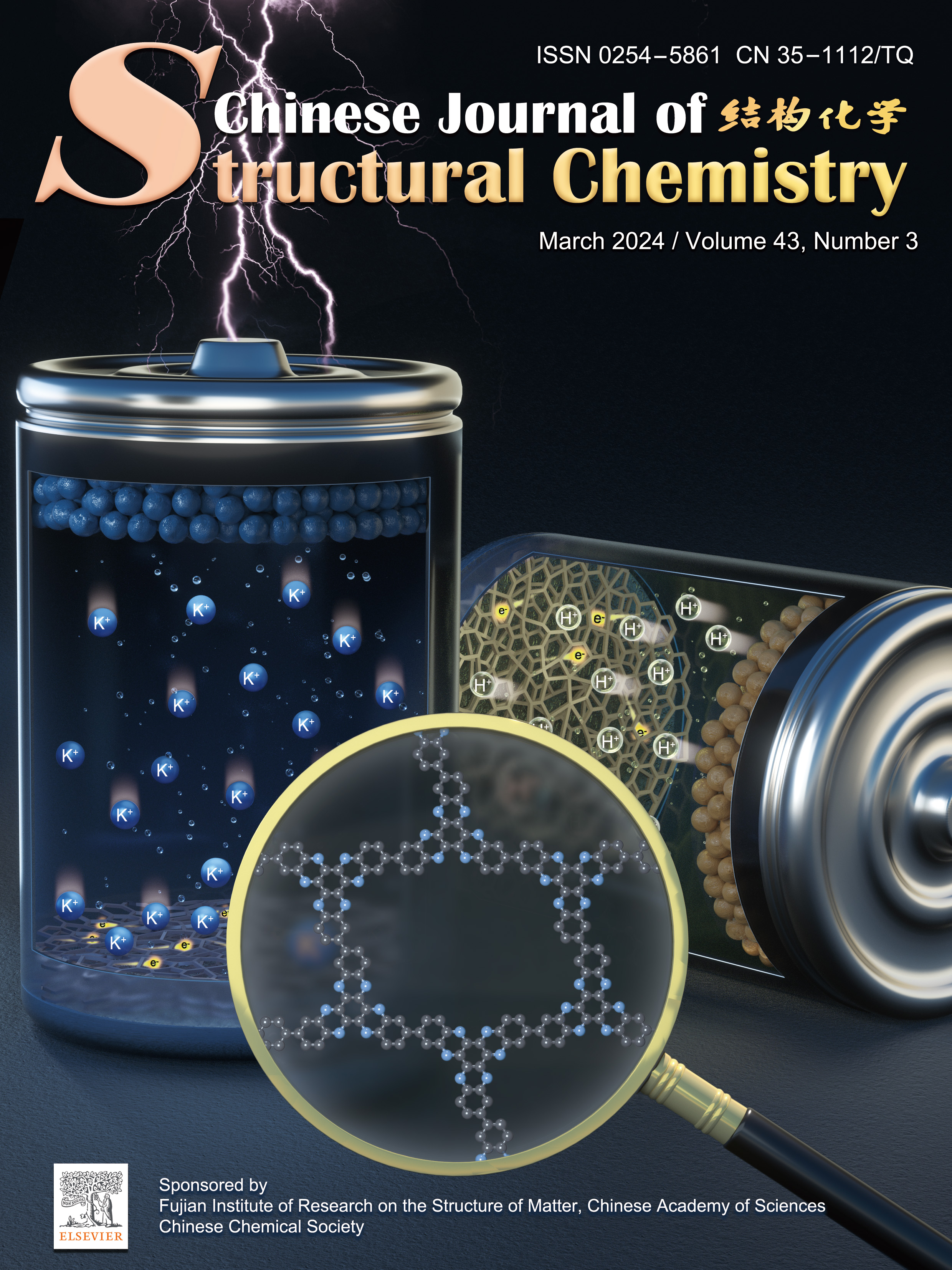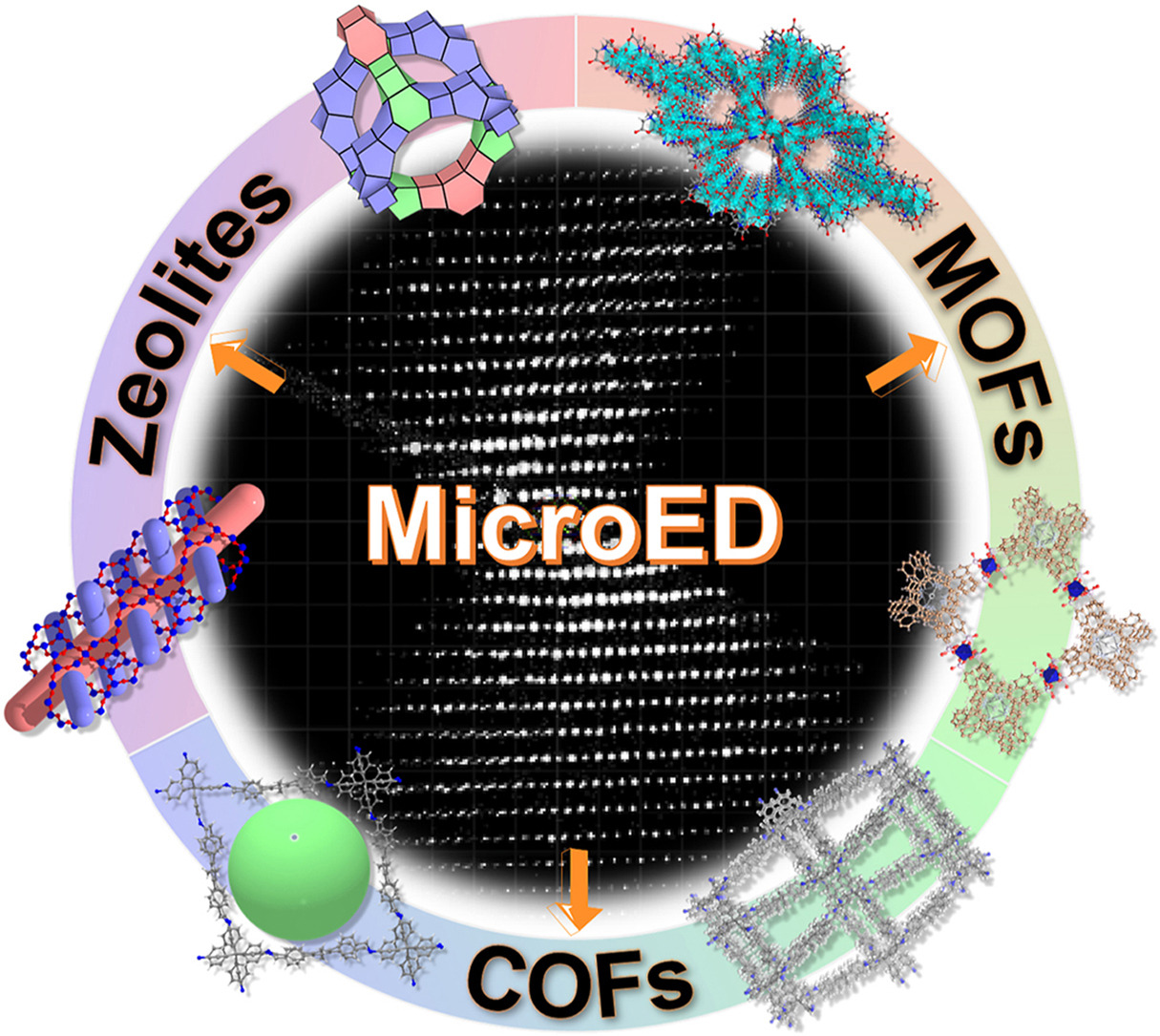
Long-lifespan aqueous alkaline and acidic batteries enabled by redox conjugated covalent organic polymer anodes
Yuanzhe Lu, Yuanqin Zhu*, Linfeng Zhong*, Dingshan Yu*
Submit a Manuscript
Chao Ma, Cong Lin*, Jian Li*
Chin. J. Struct. Chem., 2024, 43: 100209. DOI: 10.1016/j.cjsc.2023.100209
March 15, 2024
Atomic structure; MicroED; Porous materials; Three-dimensional electron diffraction
ABSTRACT
Porous materials have garnered significant attention in recent years. Understanding the intrinsic relationship between their structures and properties requires precise knowledge of their atomic structures. Single-crystal X-ray diffraction (SCXRD) has traditionally been the primary method for elucidating such structures, but it demands large, high-quality crystals, often exceeding 5 μm in size. The growth of these crystals can be a time-consuming process, especially for one- and two-dimensional materials. To explore structures at the nanoscale, MicroED (microcrystal electron diffraction (ED)) offers unprecedented insights into the realm of nanomaterials. This revolutionary technique enables researchers to uncover intricate details within nanoscale structures, promising to reshape our fundamental understanding of materials. In this review, we delve into the applications of MicroED in the study of various porous materials, including zeolites, metal-organic frameworks (MOFs), and covalent organic frameworks (COFs). We emphasize the pivotal role of MicroED in nanomaterial characterization, enabling precise crystallographic analysis and phase identification.






